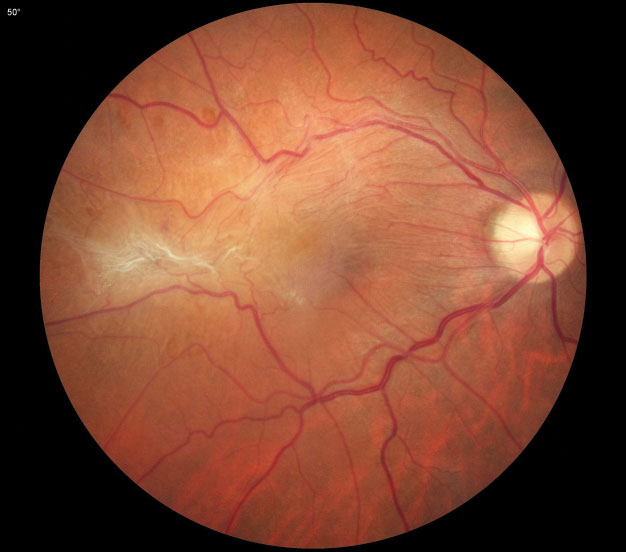The present of epiretinal membrane, vitreomacular traction or another vitreomacular interface abnormality (VMIA) has been reported in as many as 43% of patients with diabetic macular edema (DME). These incidence rates are important for clinicians to consider, as previous studies suggest that patients with VMIA may have decreased response to anti-VEGF therapy. To get a better picture of how these patients respond to therapy, researchers conducted a case notes review to determine treatment response at regular monthly intervals. They found that patients with and without VMIA fared similarly at the outset, but after six months, response differed.
 |
|
Vitreomacular interface abnormalities were once thought to act as barriers to anti-VEGF diffusion, but because early CMT response to treatment is seen in patients with these abnormalities, researchers now say it’s more likely that any observed differences are due to changes in the behavior of these eyes after six months. Photo: Diana Shechtman, OD. Click image to enlarge. |
The retrospective case notes review included 119 treatment naïve DME eyes undergoing anti-VEGF therapy. Researchers reported that all eyes’ baseline central macular thickness (CMT) measurements were comparable (417µm and 430µm in the no-VMIA and VMIA groups, respectively), and both groups improved to approximately 300µm. After six months, the no-VMIA group saw continued improvements in CMT while the VMIA group saw progressive deterioration. At 12 months, the change in CMT between the two groups was statistically different (108µm vs. 79µm, respectively), with a mean of seven injections.
The researchers concluded that there’s a 46% incidence of VMIA in patients with newly diagnosed center-involving DME undergoing anti-VEGF treatment, with an increased prevalence of 47% by one year. “Differences in clinical response between patients with and without VMIA may help guide further prospective controlled studies and optimize treatment strategies,” the researchers wrote in their Graefe’s paper.
Maguire M, Laidlaw D, Davies N, et al. The impact of vitreo-macular interface abnormalities on the response to anti-VEGF therapy for centre involving diabetic macular oedema. Graefe’s Arch Clin Exp Ophthalmol. May 21, 2024. [Epub ahead of print]. |

